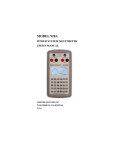Download MNL-V1RVx MNL-V2RVx - Schneider Electric Buildings iPortal
Transcript
MNL-V1RVx MNL-V2RVx TAC I/A Series MicroNet Variable Air Volume Controllers Installation Instructions Application TAC I/A Series© MicroNet MNL-V1RVx and MNLV2RVx VAV Controllers are interoperable variable air volume controllers designed in accordance with LONMARK®-guidelines. These controllers provide pressure independent control for cooling and reheat applications. They feature a built-in actuator with overthe-shaft damper mounting, an integral velocity pressure transducer, LED indication, support for an MN-Sx digital sensor, push-button manual override, mechanical position indication, and an easy-to-set mechanical travel limit. They function in standalone mode or as part of a MicroNet LonWorks® network using the integral FT 3150® Free Topology communications transceiver. A direct connection to a WPA-LON Work Place Communication adapter and a PC with Work Place Tech Tool software is necessary to download and modify applications. SW 2 SW 4H3 24 SW H2 24H 24H 1 24G GN D S-L A CO O M UI K/C DI OM S-L K LO N LO N MNL-V2RVx Model Chart MNL-V1RVxa MNL-V2RVxa Digital Inputs 1 1 Digital Outputs 0 3 Universal Inputs 1 1 Analog Outputs 0 1 Model Inputs/ Outputs Box Configuration Cooling • • • • • Cooling Series Fan Induction Parallel Fan None Reheat Type None • Staged Electric • Time Proportioned • Floating/ Proportional Hydronic Reheat • None Other None • Occupancy • Satellite Control Strategies a Vx denotes LONMARK VAV (Variable Air Volume) profile and profile version number. Printed in U.S.A. 02-10 © 2010 Schneider Electric. All rights reserved. F-26282-6 Applicable Documentation F-Number Description Audience Purpose F-26277 TAC I/A Series MicroNet MN-Sx Series Sensors General Instructions – – – – Application Engineers Installers Service Personnel Start-up Technicians Provides step-by-step installation and checkout procedures for TAC I/A Series MicroNet MN-Sx Series Sensors. Also contains instructions for sensor operation. F-26303 TAC I/A Series MicroNet System Overview – – – – Application engineers Installers Start-up technicians Service personnel Provides an overview of the TAC I/A Series MicroNet System. It includes brief descriptions of the hardware and software components, and how they may be combined to create MicroNet networks and stand-alone systems. F-27254 Work Place Tech Tool 4.0 Engineering Guide – – – – Application Engineers Installers Service Personnel Start-up Technicians Provides engineering and technical information for applying and using all aspects of Work Place Tech Tool. F-26507 TAC I/A Series MicroNet Systems Engineering Guide – – – – Application Engineers Installers Service Personnel Start-up Technicians Provides engineering and technical information to assist in designing a complete MicroNet controller system using different architectures, components, and software. F-27255 Work Place Tech Tool 4.0 User’s Guide – – – – Application Engineers Installers Service Personnel Start-up Technicians Provides step-by-step instructions for using Work Place Tech Tool. F-26363 EN-206 Guidelines for Powering Multiple FullWave and Half-Wave Rectifier Devices from a Common Transformer – Application Engineers – Installers – Service Personnel Offers guidelines for avoiding equipment damage associated with improperly wiring devices of varying rectifier types. Contains instructions for identifying device rectifier type, guidelines for correctly powering devices of varying rectifier types, and examples illustrating proper power wiring techniques. F-26421 MicroNet VAV Flow Balance User’s Manual – – – – Provides step-by-step instructions for using the MicroNet VAV Flow Balance software. Application Engineers Installers Service Personnel Start-up Technicians Installation Inspection Requirements (These items not provided) Inspect carton for damage. If damaged, notify carrier immediately. Inspect controllers for damage upon receipt. • Installer must be a qualified technician • Job wiring diagrams • Tools: – – – – – – – 1/8" allen wrench or hex driver 1/4 inch hex driver for travel adjustment screws Pliers for turning damper shafts Digital Volt-ohm meter (DVM) Drill and bits for mounting screw Static protection wrist strap Torque wrench (capable of measuring at least 70 in-lb (7.9 N-m)) • MNA-FLO-1 enclosure for connecting to conduit (optional) • AM-135, 3/8 in. (9.5mm) to 1/2 in. (12.8mm) shaft adapter (optional) • Class 2 power transformer supplying a nominal 24 Vac (20.4 to 30 Vac) with a minimum rating of 12 VA, 50/60 Hz per controller plus Digital Output (DO) loads. Each DO can be up to 24 VA. In European Community, transformer must conform to EN 60742 • Terminators: – One LON-TERM1 terminator required for each free topology – Two LON-TERM2 terminators required for each bus topology • One #10 sheet metal screw • 0.170 in.(17/100) I.D. FRPE polyethylene tubing or 0.125 in. (1/8) I.D. or 0.25 in. (1/4) O.D. tygon tubing for piping connections. Not more than five feet (1.52m) long. 2 © 2010 Schneider Electric. All rights reserved. F-26282-6 Precautions General Warning: Electrical shock hazard! Disconnect power before installing or removing the cover. • Follow Static precautions when installing this equipment. • Use copper conductors that are suitable for 167°F (75°C). • Make all connections according to electrical wiring diagram, national and local electrical codes. Static Precautions Static charges damage electronic components. The microprocessor and associated circuitry are extremely sensitive to static discharge. Use the following precautions when installing, servicing, or operating the system. • Work in a static-free area. • Discharge static electricity by touching a known, securely grounded object. • Use a wrist strap connected to earth ground when handling the controller’s printed circuit board. Federal Communications Commission (FCC) This equipment has been tested and found to comply with the limits for a Class B digital device, pursuant to Part 15 of the FCC Rules. These limits are designed to provide reasonable protection against harmful interference in residential installations. This equipment generates, uses, and can radiate radio frequency energy and may cause harmful interference if not installed and used in accordance with the instructions. Even when instructions are followed, there is no guarantee that interference will not occur in a particular installation. If this equipment causes harmful interference to radio or television reception— which can be determined by turning the equipment off and on—the user is encouraged to try to correct the interference by one or more of the following measures: • Reorient or relocate the receiving antenna. • Increase the separation between the equipment and receiver. • Connect the equipment to an outlet on a circuit different from that to which the receiver is connected. • Consult the dealer or an experienced radio/television technician for help. Canadian Department of Communications (DOC) This class B digital apparatus meets all requirements of the Canadian Interference-Causing Equipment Regulations. European Community Directives This equipment meets all requirements of European Community Directives for Low Voltage (72/23/EEC), General Safety (92/59/EEC), and Electromagnetic Compatibility (89/336/EEC). F-26282-6 © 2010 Schneider Electric. All rights reserved. 3 Location These controllers are for indoor use only. Caution: • Avoid locations where excessive moisture, corrosive fumes, vibration, or explosive vapors are present. • Avoid electrical noise interference. Do not install near large contactors, electrical machinery, or welding equipment. • Locate where ambient temperatures do not exceed 131°F (55°C) or fall below 32°F (0°C) and relative humidity does not exceed 85% or fall below 5%, non-condensing. Mounting location must clear the maximum dimensions of the controller case and allow the controller to be mounted flush to the surface of the terminal box and perpendicular to the damper shaft. Mounting Mount controllers directly over the damper shaft in any direction and on any plane that is perpendicular to the damper shaft. Mounting dimensions are shown in Figure-1. Some terminal boxes have sheet metal screw heads or other protrusions near the damper shaft. In these cases, a spacer or shim may be added under the mounting tab of the actuator to make the actuator perpendicular to the shaft. 6-1/4 (159) 2-1/2 (63) 4-1/2 (114) 1 3/4 (44) 7-3/4 (197) 5-3/4 (146) Dimensions shown are in inches (mm). Figure-1 Mounting Dimensions. 4 © 2010 Schneider Electric. All rights reserved. F-26282-6 Damper Shaft Requirements Controllers are ready to mount on 1/2 in. (12.8 mm) diameter damper shafts that extend at least 2 in. (51mm) from the side of the terminal box. To mount controller on 3/8 in. (9.5mm) diameter damper shafts, use AM-135 shaft adapter. To mount controller on shorter damper shafts, between 3/4 in. (19.1mm) and 2 in. (51mm), do the following: 1. Remove set screws from actuator collar (Figure-2). Manual Override Damper Shaft Button VAV Controller Actuator Mounting Bracket Set Srews Actuator Collar SW 2 SW 4H3 24 SW H2 24 24H H1 24G GN D Sheet Metal Screw A CO O M UI K/C DI OM S-L MNL-V2R S-L K LO N LO N Figure-2 TAC I/A Series MicroNet VAV Controller Mounting. 2. Press manual override button and turn actuator collar to full counterclockwise position until short shaft set screw holes are accessible (Figure-3). Short shaft set screw locations AO M CO I U DI 3 24H SW 4H2 2 SW 1 24H SW OM K/C S-L S-LK N LO N LO 24H 24G D GN Figure-3 Short Shaft Set Screw Location. 3. Install set screws in short shaft set screw holes. F-26282-6 © 2010 Schneider Electric. All rights reserved. 5 Mounting Controller with Damper Closed in Clockwise (CW) Position 1. Turn damper shaft to full closed (CW) position. 2. Press and hold manual override button and turn actuator collar to full CW position. 3. Release manual override button. If necessary, rotate actuator collar slightly to return button to fully extended position. 4. Loosen output shaft set screws and slide controller over damper shaft until mounting foot contacts mounting area on VAV terminal. Note: Mounting foot can be moved from the factory shipped location to the side location. 5. Rotate controller CCW about three degrees off centerline of VAV terminal and tighten output shaft set screws to 60-70 in-lb (6.8-7.9 N-m). See Figure-4. 3˚ Figure-4 CW Mounting. 6. Rotate controller CCW to centerline of VAV terminal (damper should be sealed). 7. Using controller mounting foot as a template, mark and drill a pilot hole in VAV terminal. 8. Make certain mounting hole position does not affect performance of terminal box. If damper movement is affected, install mounting foot in side location. 9. Secure controller mounting foot using a #10 sheet metal screw. 10. Press and hold manual override button and rotate damper to full open position by turning damper shaft. 11. Release manual override button. If necessary, rotate actuator collar slightly to return button to fully extended position. 12. Loosen and slide CCW travel adjustment screw to travel indicator pin, and tighten screw to 28 to 32 in-lb (0.32 to 0.37 Kg-meter) (Figure-5). 6 © 2010 Schneider Electric. All rights reserved. F-26282-6 CCW travel adjustment screw Damper shaft Manual override button Travel indicator CW travel adjustment screw Figure-5 Travel Adjustment. 13. Verify damper moves freely between full open and full closed positions. There must be no binding between the actuator and damper, or obstructions hindering damper operation. Mounting Controller with Damper Closed in Counter-Clockwise (CCW) Position Note: The default setting for actuator rotation is CW Closes [0]. To reverse rotation, change to CW Opens [100]. 1. If direction of actuator rotation needs to be changed, then do (a.) through (e.) below. If not go to Step 2. a. Using Work Place Tech Tool, Open the project. b. Select controller from network definition page. c. Change “VAV Box Direction” property from CW Closes [0] to CW Opens [100]. d. Save and download changes. e. Close Work Place Tech Tool. 2. Turn damper shaft to full closed (CCW) position. 3. Press and hold manual override button and turn actuator collar to full CCW position. 4. Release manual override button. If necessary, rotate actuator collar slightly to return button to fully extended position. 5. Loosen output shaft setscrew and slide controller over damper shaft until mounting foot contacts mounting area on VAV terminal. Note: Mounting foot can be moved from the factory shipped location to side location. 6. Rotate controller Clockwise (CW) about three degrees off centerline of VAV terminal and tighten output shaft set screws to 60-70 in-lb (6.8-7.9 N-m). See Figure-6. F-26282-6 © 2010 Schneider Electric. All rights reserved. 7 3˚ Figure-6 CCW Mounting. 7. Rotate controller CCW to centerline of VAV terminal (damper should be sealed). 8. Using controller mounting foot as a template, mark and drill a pilot hole in VAV terminal. 9. Make certain the mounting hole position does not affect performance of terminal box. If damper movement is affected, install mounting foot in side location. 10. Secure controller mounting foot using a #10 sheet metal screw. 11. Press and hold manual override button and rotate damper to full open position by turning damper shaft. 12. Release manual override button. If necessary, rotate actuator collar slightly to return button to fully extended position. 13. Loosen and slide CW travel adjustment screw to travel indicator pin, and tighten screw to 28 to 32 in-lb (0.32 to 0.37 Kg-meter) (Figure-5). 14. Verify damper moves freely between full open and full closed positions. There must be no binding between the actuator and damper, or obstructions hindering damper operation. 8 © 2010 Schneider Electric. All rights reserved. F-26282-6 Differential (Velocity) Pressure Sensor Connections Use either 0.170 in.(17/100) I.D. FRPE polyethylene tubing or 0.125 in.(1/8) I.D. or 0.25 in. (1/4) O.D. tygon tubing for piping connections. Maximum length of tubing is five feet (1.52 m). 1. Remove yellow plastic fitting caps from barbed fittings. 2. Connect tubing to barbed fittings on VAV Controller. See Figure-7. Barbed Fittings Differential (Velocity) Pressure Sensor Connections AO M CO I U DI OM K/C S-L S-LK N LO N LO 3 24H SW 4H2 2 SW 1 24H SW 24H 24G D GN Figure-7 Differential (Velocity) Pressure Connections. 3. Connect tube from P1 fitting on controller to low pressure tap on VAV terminal. See Figure-8. 4. Connect tube from P2 fitting on controller to high pressure tap on VAV terminal. See Figure-8. Differential (Velocity) Pressure Gauge Use a differential (velocity) pressure gauge to calibrate and verify central system is delivering accurate pressure. Figure-8 shows connections for attaching gauge. When gauge is removed, restrictors must be plugged or removed from tubing. Terminal Flow Measuring Pickup Inlet VAV Air Terminal HI LO P1 P2 Air Flow Discharge Duct (LO) (HI) AT-532-222-1-1, .0075" (190.5 µm) Restrictors are only required when differential (velocity) pressure gauge is present. HI LO Differential (velocity) pressure gauge for Calibration (Magnehelic). Figure-8 Typical VAV Terminal Piping Connections. F-26282-6 © 2010 Schneider Electric. All rights reserved. 9 Wiring LONWORKS Analog Output 0 to 20mA into an 80 to 550Ω 3 load Universal Input Digital Outputs 24 VA per output at 24 Vac, Class 2. Pilot Duty Form A Single Pole, Single Throw Normally Open Relay (switched 24H outputs) AC Power 24 Vac, 50/60 Hz Class 2 (EN 60742) 12 VA per controller plus DO load SW24H3* SW24H2* SW24H1* 24H 24G(COM) GND AO* COM UI DI S-LK/COM S-LK LON LON 0 to 5 Vdc 0 to 20 mA 4 10K Thermistor 5 1K Balco 1K Platinum Digital 1 2 Digital Input Dry Contact 1 6 S-Link Supports one TAC I/A Series MN-SX Sensor LONWORKS Network Communications FT 3150 Transceiver Controller LEDs Service Pin Button 4 In applications requiring universal inputs with ranges of 0 to 20 mA, 1 To detect a closed switch, maximum a 250 ohms shunt resistor kit, AD-8969-202, is needed. resistance must be less than 300 ohms. 2 To detect an open switch, minimum resistance must be greater than 1.5K ohms. 5 An 11K ohms shunt resistor kit, AD-8969-206, is required for a 10K ohms Thermistor Sensor (non-850 series) universal inputs. 3 Input signals of 1 to 11 Vdc must be converted to 0.45 to 5 Vdc 6 To detect an open switch, minimum resistance must be greater than 100K ohms. with a voltage divider, AD-8961-220. * The asterisk indicates that the termination appears only on the MNL-V2RVx Controller. All other terminations appear on both the MNL-V1RVx Controller and the MNL-V2RVx Controller. Figure-9 MNL-V1RVx and MNL-V2RVx Series Terminal Connections. 10 © 2010 Schneider Electric. All rights reserved. F-26282-6 The following electrical connections can be made to TAC I/A Series MicroNet VAV controllers: • Sensor Link (S-Link) connection to an TAC I/A Series MicroNet Sensor (MN-SX) • MicroNet LONWORKS network (LON) connection to a MicroNet Interface (MI) and other MicroNet controllers • LONWORKS network connection from controller to an TAC I/A Series MicroNet Sensor • I/O connections including: – – – – One Universal Input (UI) One Digital Input (DI) One Analog Output (AO) (MNL-V2RVx model only) Three Digital Outputs (DO) (MNL-V2RVx model only) • Power connection to a 24 Vac nominal Class 2 (EN 60742) power source and earth ground. Communications Wiring Caution: • Communication wire pairs must be dedicated to S-Link and MicroNet LONWORKS network (LON) communications. They cannot be part of an active, bundled telephone trunk. • Shielded cable is not required for S-Link or LON wiring. • If the cable is installed in areas of high RFI/EMI, the cable must be in conduit. • If shielded wire is used, the shield must be connected to earth ground at only one end by a 470K ohm 1/4 watt resistor. Shield must be continuous from one end of the trunk to the other. Communications wiring includes a connection between the controller and an TAC I/A Series MicroNet Sensor via the S-Link and a connection between the controller and the MicroNet LONWORKS Network (LON). An optional LONWORKS Network connection between the controller and one TAC I/A Series MicroNet Sensor is also possible. Figure-9 shows S-Link and LON wiring terminations. Sensor Link (S-Link) Wiring S-Link wiring powers and enables the MN-Sx sensor. The S-Link needs at least 24 gage (0.51mm), twisted pair, voice grade telephone wire. The capacitance between conductors cannot be more than 32 pF per foot (0.3m). If shielded cable is used, the capacitance between any one conductor and the others, connected to the shield, cannot be more than 60 pF per foot (0.3m). Maximum wire length is 200 ft. (61m). Note: • Controller supports one TAC I/A Series MicroNet Sensor (MN-Sx). • S-Link wiring is polarity insensitive. • If conduit is used between an TAC I/A Series Sensor and a controller, the MicroNet LONWORKS network and S-Link wiring can be in the same conduit, however, they must be separate cables. S-Link wiring can be in the same conduit with UI, AO, and DI Wiring. MicroNet LONWORKS Network (LON) Wiring An approved Category 4 or 5 twisted-pair cable may be used for both S-Link and optional LONWORKS network connections between the controller and MN-Sx sensor. LONWORKS network wiring is polarity insensitive. Caution: Do not mix with UI, AO, DO, DI, or power types of wiring. If conduit is used between an TAC I/A Series Sensor and a controller, LONWORKS network wiring and S-Link wiring can be in the same conduit, however, they must be separate cables. F-26282-6 © 2010 Schneider Electric. All rights reserved. 11 TAC I/A Series MicroNet VAV controllers use a LONWORKS Free Topology Transceiver (FT 3150) and support polarity insensitive bus (daisy-chain) and free (all combinations of star, tee, and loop) wiring topologies. A maximum of 62 nodes can be connected per segment. See TAC I/A Series MicroNet System Engineering Guide, F-26507 to design a MicroNet LONWORKS TP/FT-10 network, including recommended topologies and approved cable types. 60 pF per foot (0.3m). Maximum wire length is 200 ft. (61m). Note: • Use of the LON terminals to connect to the MN-Sx sensor permits the use of the sensor’s built-in LON jack. • To preserve the integrity of the network, the LON wiring connecting an TAC I/A Series MicroNet controller to an MN-Sx sensor must be run to the sensor and back, in daisychain fashion. A wire “spur” must not be used to connect the sensor to the controller.. • While the MN-Sx sensor is not counted as a “node” in the LONWORKS network (LON), all LON wiring to the sensor must be counted when determining the length of the FTT wiring segment. I/O Wiring I/O connections include universal input, digital input, analog output, and digital (relay) outputs. See Figure-9 for wire terminal information. Caution: If shielded cable is used, connect only one end of the shield to earth ground at controller. Universal Input (UI), Digital Input (DI), and Analog Output (AO) Caution: • Input and output devices cannot share common wiring. Each connected device requires a separate signal and return conductor. • Power wiring cannot share conduit with UI, AO, S-Link, LON, or DI wiring. Note: • If maximum closed switch voltage is not more than 1.0 V and minimum open switch voltage is at least 4.5 V, then solid state switches may be used for a UI or a DI. • UI, AO, DI, and S-Link wiring can share a single conduit. UI, AO, DI, wiring needs at least 24 gage (0.51mm), twisted pair, voice grade telephone wire. The capacitance between conductors cannot be more than 32 pF per foot (0.3m). If shielded cable is used, the capacitance between any one conductor and the others, connected to the shield, cannot be more than 60 pF per foot (0.3m). Table-1 provides wiring specifications. Table-1 UI, AO, and DI Wiring Specifications. Connection UI, AO, and DI Gage AWG (mm) Maximum Distance ft. (m) 18 (1.02) 300 (91) 20 (.81) 200 (61) 22 (.65) 125 (38) 24 (.51) 75 (23) Digital Outputs (DO) (MNL-V2RVX only) Caution: • DO terminals accept one 16 gage (1.29mm) wire or two 18 gage (1.02mm) wires. The selected wire gage must be consistent with the load current rating. • DO wiring cannot be intermixed with DI, UI, AO, S-Link, or LON wiring. • TAC I/A Series MicroNet VAV controllers are Class 2 (EN 60742) only devices. 12 © 2010 Schneider Electric. All rights reserved. F-26282-6 Note: • Digital Output wiring can be intermixed with power wiring. • The minimum permissible load for Digital Outputs is 10mA at 5 Vdc. Three relay outputs on the controller are used for pilot duty control of electrical contactors and floating or two-position reheat actuators. See Figure-10. Digital output load specifications for the controller are shown in Table-2. 1 AC Load SW24H3 AC Load SW24H2 AC Load 3 SW24H1 24H Primary Frame 24 Vac 2 24G (COM) Class 2 Transformer 1 2 3 GND See application documentation for output designation and wiring specifics. Polarity must be maintained (24H connected to 24H and 24G connected to 24G). Dashed lines represent internal controller circuitry. Figure-10 Relay Output Field Wiring. Table-2 Relay Output Load Specifications. Specification Value Maximum Relay Contact Switched Output Voltage voltage at 24H terminala Maximum Output Load @ 24 Vac, Pilot Duty 24 VA Minimum Controllable Load 10.0 mA Maximum Off-state Leakage Current 3.5 mA Minimum Relay Cycles at Rated Load (Power Factor = 0.4) 300,000 cycles a Switched output voltage is equivalent to value of input voltage. Power Supply Wiring Caution: • This product contains a non-isolated half-wave rectifier power supply and must not be powered by transformers used to power other devices containing non-isolated full-wave rectifier power supplies. Refer to EN-206, Guidelines for Powering Multiple Full-Wave and Half-Wave Rectifier Devices from a Common Transformer, F-26363, for detailed information. • Power wiring cannot be intermixed with LON, S-Link, UI, AO, or DI wiring. • Use a Class 2 (EN 60742) power transformer supplying a nominal 24 Vac (20.4 to 30 Vac) with a minimum rating of 12 VA at 50/60 Hz plus digital output loads (84 VA: 12 VA plus DO loads at 24 VA each). The supply to the transformer must be provided with a breaker or disconnect. • The Class 2 (EN 60742) power transformer may be used to power multiple Class 2 powered devices provided that the transformer is properly sized to power all equipment simultaneously and all devices contain the same type of rectifier power supplies or internal isolation. • The transformer frame must be grounded. • When powering multiple Class 2 devices from the same Class 2 (EN 60742) power transformer, polarity must be observed (24H connected to 24H and 24G connected to 24G). F-26282-6 © 2010 Schneider Electric. All rights reserved. 13 Note: • Power wiring terminals accept one 16 gage (1.29mm) or two 18 gage (1.02mm) wires. • Power wiring can be intermixed with DO wiring. • Twisted or untwisted cable can be used for power wiring. Figure-11 and Figure-12 are acceptable wiring configurations. To MNL-MI and rest of LonWorks Network 1 Primary 24 Vac Secondary Class 2 (EN 60742) 2 S-LK LON Ground Frame of Transformer to Known Ground 3 TAC I/A Series MN-Sx Sensor MNL-V1RVx MNL-V2RVx 1 Polarity must be maintained (24H connected to 24H and 24G connected to 24G). 2 Class 2 Wiring. 3 Optional connection provides local access to the LonWorks network. Figure-11 Single Controller Powered from a Separate Class 2 (EN 60742) Power Source. 14 © 2010 Schneider Electric. All rights reserved. F-26282-6 24VAC to other MNL-V1RVX or MNL-V2RVx Controllers To MNL-MI and rest of LonWorks Network MNL-V1RVx MNL-V2RVx 1 Primary 24 Vac Secondary Class 2 (EN 60742) S-Link LON Ground Frame of Transformer to Known Ground 3 TAC I/A Series MN-Sx Sensor MNL-V1RVx MNL-V2RVx 2 S-Link LON 3 TAC I/A Series MN-Sx Sensor MNL-V1RVx MNL-V2RVx 2 S-Link LON 3 TAC I/A Series MN-Sx Sensor 1 Polarity must be maintained (24H connected to 24H and 24G connected to 24G). 2 Class 2 Wiring. 3 Optional connection provides local access to the LonWorks network. Figure-12 Multiple Controllers Powered from a Single Class 2 (EN 60742) Power Source and Sharing Communications in a Free Topology Segment. F-26282-6 © 2010 Schneider Electric. All rights reserved. 15 Checkout Mechanical Hardware Checkout 1. Verify both set screws are tightened to damper shaft. 2. Press and hold manual override button and rotate damper by turning damper shaft. Verify damper moves freely between full open and full closed positions. 3. Verify wiring between the TAC I/A Series MicroNet Sensor and controller is installed according to job wiring diagram and national and local electrical codes. 4. If controller is part of a MicroNet LONWORKS network, verify the TP/FT-10 LONWORKS network wiring between the controller and other devices is installed according to job wiring diagram and national and local electrical codes. Note: Wiring of the S-Link and MicroNet LONWORKS network between the sensor and the controller is not polarity sensitive. 5. Verify 24 Vac power is provided from a Class 2 (EN 60742) power transformer and wiring is installed according to job wiring diagrams and with national and local electrical codes. 6. If multiple devices are powered from the same transformer, verify wiring polarity has been maintained between all connected devices (24H connected to 24H and 24G connected to 24G). 7. If multiple devices are powered from a common transformer, verify all issues associated with powering multiple devices from a common transformer have been addressed. Note: For more information, refer to EN-206, Guidelines for Powering Multiple Full-Wave and Half-Wave Rectifier Devices from a Common Transformer, F-26363. 8. For MNL-V2RVx models, verify digital outputs are wired according to job wiring diagram and with national and local electrical codes. 9. Make certain the current requirements of the controlled device do not exceed rating of the controller’s digital outputs (MNL-V2RVx only). 10. Verify piping from air station velocity pressure sensor is properly connected to P1 LO and P2 HI fittings on the controller. 16 © 2010 Schneider Electric. All rights reserved. F-26282-6 Communications Hardware Checkout 1. Verify controller is in a manually controlled, safe state. 2. Place controller power breaker in the ON position. See job wiring diagrams. 3. Observe green Data Transmission LED (Figure-13) and do the following: a. If green Data Transmission LED is steady on or blinking, go to step 4. b. If green Data Transmission LED is off, check power. 4. Observe red Service LED (Figure-13) and do the following: a. If the red Service LED is off or flashing, proceed with downloading an application using WorkPlace Tech Tool (WP Tech) and configuring the controller with a third party network management tool. Refer to Work Place Tech Tool 4.0 Engineering Guide, F-27254, for details on downloading applications. b. If red Service LED is steady on, turn power to controller OFF, wait five seconds, and turn power ON. If red Service LED is still steady on, turn power OFF and replace controller. 5. If connected to a MicroNet LonWorks network (LON), verify Reception and Transmission LEDs (Figure-13) indicate normal operation. See Table-3. SW 2 SW 4H3 24 SW H2 24 24H H1 24G GN D A CO O M UI S-L K/C DI OM S-L K LO N LO N AO COM UI DI S-LK/COM S-LK LON LON Red service LED S-LK LON Green power and data transmission LED Amber data reception LED Figure-13 Location of MNL-V1RVx and MNL-V2RVx LEDs. F-26282-6 © 2010 Schneider Electric. All rights reserved. 17 Table-3 LED Indication. Indicator Data Reception LED – amber Context Anytime Status Corrective Action Blinks when the controller receives data from the LONWORKS network None required. On indicates a possible network connection problem, or a large amount of network traffic is present. Remove the LONWORKS network connections from the controller and determine if the LED goes off. If the LED does not go off, replace the controller. If the LED does go off, check the network topology (connections to each node, routers, terminators, etc.) and the amount of traffic on the network. Off indicates that data reception is not taking place. Blinks when the controller transmits data to the LONWORKS network. Data Transmission LED – Green Anytime Off indicates no power to the controller Check power Power-up The LED blinks once to indicate successful power-up. Wink mode Blinks (3 seconds on, 1 second off) three times to indicate None Required physical location of the controller. If a sensor (MN-Sx) is connected, its red occupancy LED will flash (1/sec) during the wink period. Anytime On indicates that the neuron application is not running. Neuron applications are not field replaceable. Replace the controller. Blinks (1/sec) to indicate that the neuron application is loaded, but the neuron’s communication parameters are not loaded, are being reloaded, or have been corrupted. Neuron is considered unconfigured. Communication parameters cannot be configured by field personnel. Use a third party network management tool to commission the controller, or use the change state tool in WorkPlace Tech Tool (version 4.0 or greater) to set the Neuron® to the configured/on-line state. While the controller is unconfigured, WP Tech can be used to download an application, but at the completion of the download, WP Tech version 4.0 and higher will restore the Neuron to the unconfigured state. Anytime Off indicate that the neuron application is loaded but the device is off-line. In this state, a pre-loaded HVAC application will not run. Use a third party network management tool to commission the controller, or use the change state tool in WorkPlace Tech Tool (version 4.0 or greater) to set the Neuron® to the configured/on-line state. While the controller is unconfigured, WP Tech can be used to download an application, but at the completion of the download, WP Tech version 4.0 and higher will restore the Neuron to the unconfigured state. Anytime Off usually indicates a normal state. In this state, the controller operates normally, and you can download and/or run HVAC applications. If the controller is able to accept and/or run a downloaded HVAC application, no action is required. Anytime Service LED – Red 18 None Required On indicates that the controller is not transmitting data. On also indicates that power is being applied to the controller. © 2010 Schneider Electric. All rights reserved. F-26282-6 Controller Selection Identical pairs of factory barcode labels are attached to each controller. The labels can be used to select controllers for application downloading purposes. Each pair of labels contains a unique Neuron ID. One of the labels remains on the controller permanently; the other label can be placed on a job site node list plan. The Neuron ID can then be entered into a job network profile through the Work Place Tech Tool (must be version 4.0 or greater). The Work Place Tech Tool (or third party network management tool) can then download an application to the selected controller. See Work Place Tech Tool 4.0 Users Guide, F-27255, for additional information. The service pin button is also used to select controllers. When this button is pressed, the controller sends a broadcast message containing its Neuron ID to the online or connected Work Place Tech Tool (or third party network management tool). After the message is received, the controller can be selected for application downloading. See Work Place Tech Tool Engineering 4.0 Guide, F-27254, for additional information. F-26282-6 © 2010 Schneider Electric. All rights reserved. 19 Service Components within I/A Series MicroNet VAV controllers cannot be field repaired. If there is a problem with a controller, follow the steps below before contacting your local Schneider Electric Office. 1. Make sure controllers are connected and communicating to desired devices. 2. Check all sensors and controlled devices are properly connected and responding correctly. 3. If controller is operating, make sure the correct profile and application is loaded by checking the LONMARK Program ID and the nvoDeviceinfo using Work Place Tech Tool (or third party network management tool). For more information, See Work Place Tech Tool 4.0 Engineering Guide, F-27254. 4. Record precise hardware setup indicating the following: Version numbers of applications software. Controller firmware version number. Information regarding the Work Place Tech Tool. A complete description of difficulties encountered. Distributed, manufactured, and sold by Schneider Electric. I/A SERIES trademarks are owned by Invensys Systems, Inc. and are used on this product under master license from Invensys. Invensys does not manufacture this product or provide any product warranty or support. For service, support, and warranty information, contact Schneider Electric at 1-888-444-1311. On October 1st, 2009, TAC became the Buildings Business of its parent company Schneider Electric. This document reflects the visual identity of Schneider Electric, however there remains references to TAC as a corporate brand in the body copy. As each document is updated, the body copy will be changed to reflect appropriate corporate brand changes. All brand names, trademarks and registered trademarks are the property of their respective owners. Information contained within this document is subject to change without notice. Schneider Electric 1354 Clifford Avenue, P.O. Box 2940, Loves Park, IL 61132-2940, USA F-26282-6 1-888-444-1311 www.schneider-electric.com/buildings February 2010 tl © 2010 Schneider Electric. All rights reserved. • • • •





















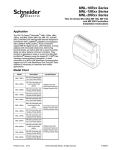


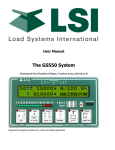
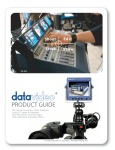
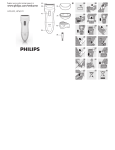
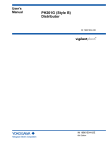
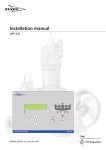
![[MI 611-225] Model 875PH, Style C Intelligent](http://vs1.manualzilla.com/store/data/005757319_1-1ee84ed274e85c607e950fedd7484b8e-150x150.png)
